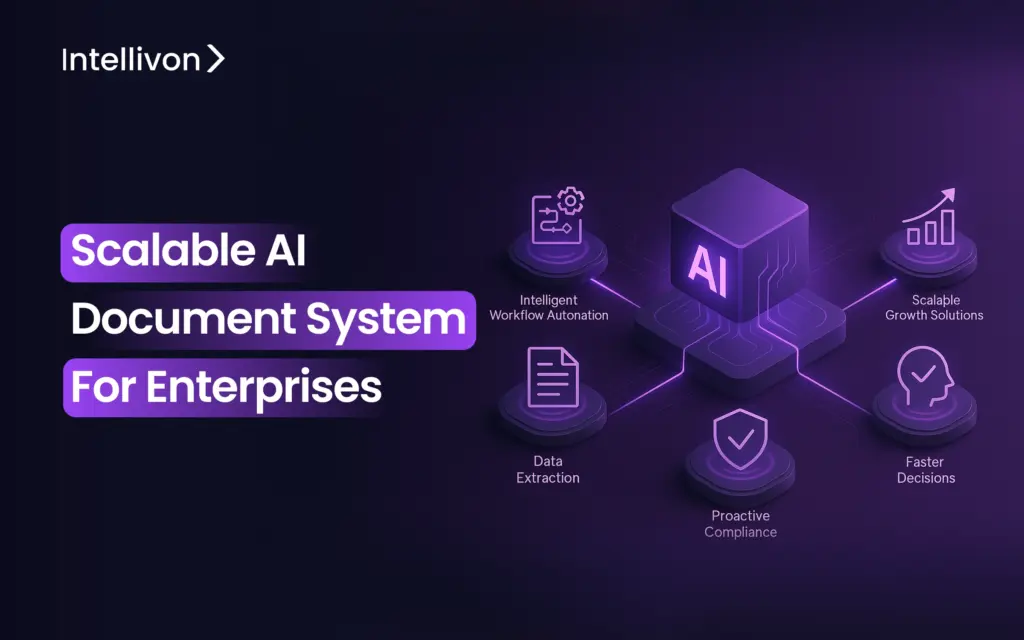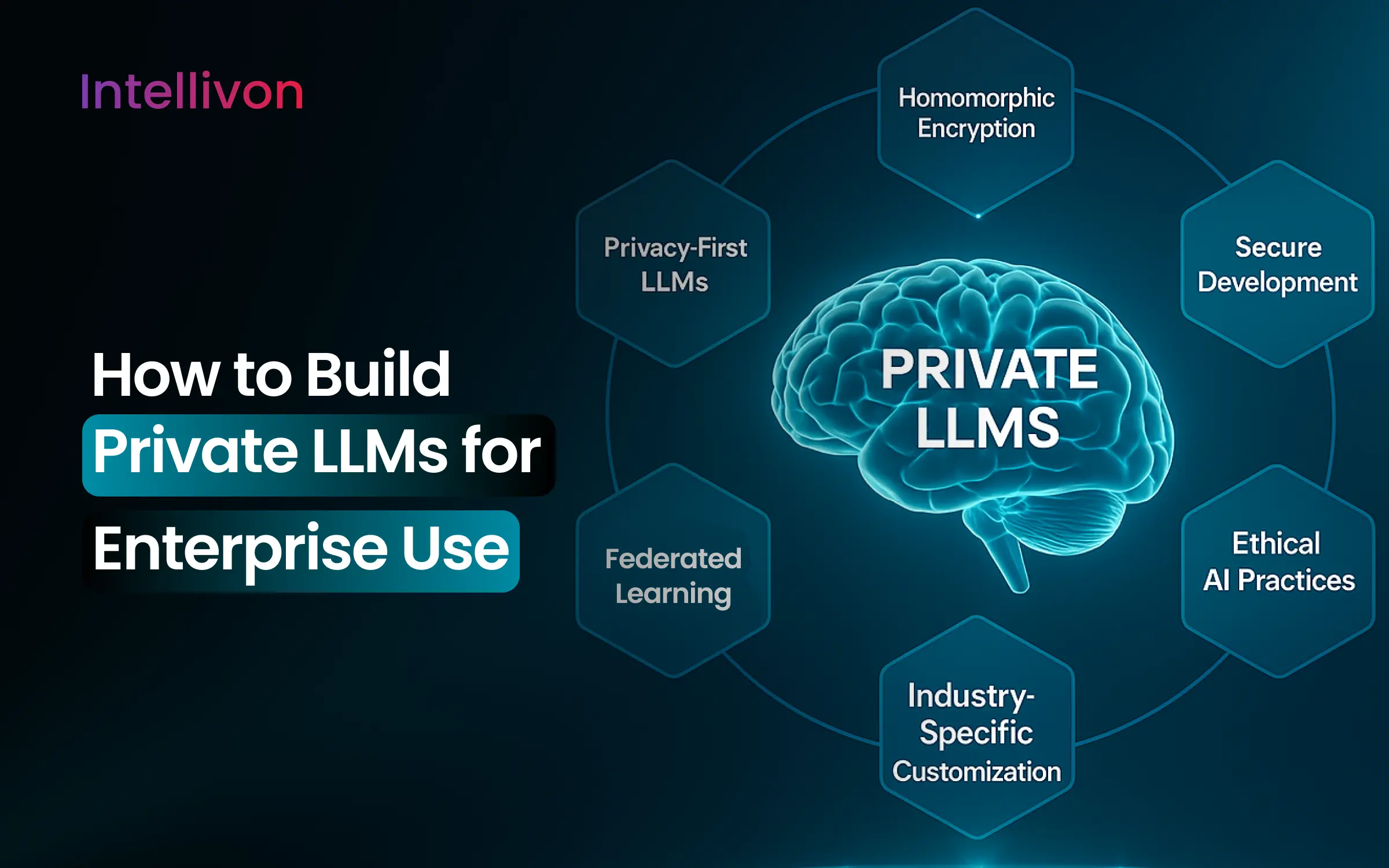Scalable AI Document System for Enterprises

Global enterprises exchange billions of documents each year. Yet most systems treat these documents as static files, not living data. Fragmented tools, siloed systems, and compliance blind spots only add to the chaos. The outcome? Delays, errors, and frustrated teams are drowning in documents instead of unlocking their insights. For instance, 83% of employees say they’ve had to recreate files they couldn’t find, wasting a lot of time. Additionally, employees waste up to 3 hours per working day sorting through documents and manual data handling, time which could be better used for strategic decision-making. But there’s a smarter way forward. Scalable AI Document Systems transform enterprise document overload into smooth workflows. These systems turn document chaos into business clarity. Coca-Cola adopted an AI-powered documentation platform, after which data quality improved by 90%, ensuring reliable documentation across all company locations. In this blog, we will cover everything about AI enterprise document systems, from why they are important, their benefits, how Intellivon implements these systems, and some future practices to solidify them into enterprise legacy systems. Intellivon, with 11+ years of experience, is a leading AI documentation partner, providing expert solutions tailored to specific enterprise issues. What Is a Scalable AI Document System and Why Enterprises Need One Now A scalable AI document system is more than just digital storage. It’s an intelligent, self-learning solution that can ingest, classify, extract, and process documents at enterprise scale, across formats, languages, and business contexts. Unlike traditional document management systems (DMS), it understands files instead of just storing them. In real-world terms, consider this: an international bank receives hundreds of thousands of forms daily, from loan applications to compliance reports. Manually processing them leads to bottlenecks, human errors, and rising costs. Even legacy DMS tools fall short, offering basic indexing but no intelligence. This overload creates serious risks: missed deadlines, non-compliance penalties, and inefficient operations. That’s why enterprises are shifting from static, rules-based systems to AI-driven document platforms that learn and evolve. These systems use machine learning and natural language processing (NLP) to improve how they recognize, interpret, and route information. The document management systems market is expected to grow from USD 10.51 billion in 2025 to USD 19.81 billion by 2030, growing at 13.5% annually, according to Mordor Intelligence reports. 60% of enterprises are investing in AI to convert unstructured data into structured formats. By 2026, 70% of data preparation for AI projects will use automated tools, with AI-enabled data extraction and RAG being crucial. Over 50% of IDP solutions will feature advanced AI/ML capabilities by 2024. The data highlights rapid growth in AI-driven document management, with businesses quickly adopting cloud-based, scalable solutions using ML, NLP, and automation to manage growing document volumes and compliance needs. Current Challenges in Document Management for Global Enterprises Every day, your enterprise generates over 2.5 quintillion bytes of data. Yet, instead of creating clarity, this data often adds complexity. Many enterprises still rely on outdated systems that turn document management into a liability rather than an asset. Here are three urgent and interconnected challenges that your enterprise is facing right now: 1. The Data Silo Crisis Over time, enterprise systems grow in silos. You may use popular software for collaboration, legacy ECMs for compliance, and local drives for daily tasks. But these disconnected repositories limit data visibility and trust. Teams can’t easily collaborate or access unified insights. This siloed structure leads to decision-making based on incomplete or outdated information, which is a risky proposition at the executive level. 2. Increasing Compliance Costs With strict regulations like GDPR, HIPAA, and industry-specific laws, compliance is more complex than ever. Many enterprises must juggle legacy tools and manual processes just to stay audit-ready. Legal departments are increasingly burdened by document-heavy processes, with compliance activities consuming disproportionate resources compared to strategic legal work. 3. AI Integration Complexity As GenAI and agentic AI scale across enterprises, AI-readiness becomes non-negotiable. Yet, unstructured documents remain inaccessible to AI models due to poor architecture. Without intelligent document systems, even advanced algorithms can’t extract value from your data. This creates a serious gap between digital transformation goals and daily operations. The real danger? While your teams struggle with document chaos, your competitors are using AI-driven systems to gain speed, agility, and insight. The time to act is now. Why Scalable AI Document Systems are the Game Changer Traditional document systems weren’t built for today’s enterprise demands. In contrast, scalable AI document systems unlock operational efficiency, compliance resilience, and data-driven decision-making. Here’s how they redefine enterprise workflows. 1. Cutting Operational Costs with Intelligent Automation Manual document handling slows everything down. From data entry to verification, repetitive tasks consume valuable human capital. By implementing intelligent automation, enterprises can cut significant operational costs. AI document systems take over the heavy lifting, like extracting data, validating formats, and routing files instantly. As a result, your teams can focus on higher-value work that drives innovation and growth. 2. Scalable Solutions That Grow With Your Business Scalable AI systems are built to handle growth. Using cloud-native architecture, they adjust in real time to fluctuations in document volume. Whether you’re processing 10,000 invoices today or 100,000 next quarter, performance never dips. This eliminates the need for costly infrastructure upgrades and supports continuous expansion, which means no downtime, no delays. 3. Proactive Compliance with AI Systems Legacy systems respond to compliance after issues arise. AI systems flip the script. With intelligent document processing (IDP), they monitor data in real time, flag anomalies, and ensure every document meets regulatory standards. This proactive approach turns your legal department into a strategic partner, one that prevents violations before they occur. 4. Faster Decisions with Data Access AI document systems turn trapped documents into actionable intelligence. Executives no longer have to rely on partial reports from siloed departments. Instead, they gain access to a comprehensive, real-time view of business activity. This fuels faster decisions, sharper forecasting, and true competitive advantage. Advanced Features of AI Document Management Systems Modern enterprises need intelligent, adaptable systems that evolve with the pace of




